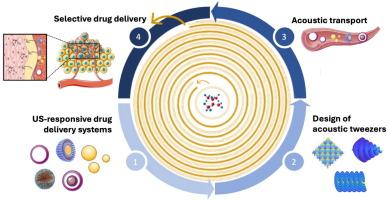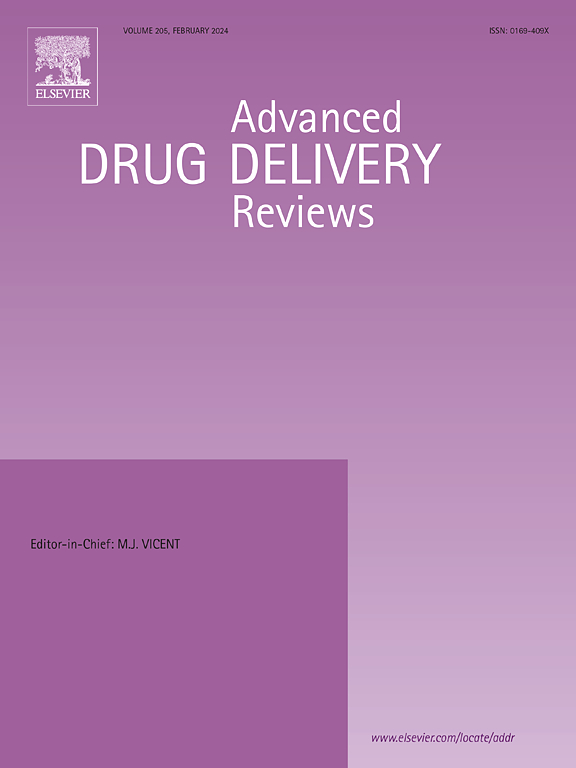Acoustic tweezers for targeted drug delivery
IF 17.6
1区 医学
Q1 PHARMACOLOGY & PHARMACY
引用次数: 0
Abstract
Acoustic tweezers are a highly promising technology for targeted drug delivery thanks to their unique capabilities: (i) they can effectively operate in both in vitro and in vivo environments, (ii) they can manipulate a wide range of particle sizes and materials, and (iii) they can exert forces several orders of magnitude larger than competing techniques while remaining safe for biological tissues. In particular, tweezers capable of selectively capturing and manipulating objects in 3D with a single beam, known as ‘single beam tweezers’, open new perspectives for delivering drug carriers to precise locations. In this review, we first introduce the fundamental physical principles underlying the manipulation of particles using acoustic tweezers and highlight the latest advancements in the field. We then discuss essential considerations for the design of drug delivery carriers suitable for use with acoustic tweezers. Finally, we summarise recent promising studies that explore the use of acoustic tweezers for in vitro, ex vivo, and in vivo drug delivery.


用于靶向药物输送的声学镊子
声学镊子是一种非常有前途的靶向药物递送技术,这要得益于其独特的能力:(i)它们可以在体外和体内环境中有效地操作,(ii)它们可以操纵各种粒径和材料,(iii)它们可以施加比竞争技术大几个数量级的力,同时对生物组织保持安全。特别是,能够用单光束选择性捕获和操纵3D物体的镊子,被称为“单光束镊子”,为将药物载体运送到精确位置开辟了新的视角。在这篇综述中,我们首先介绍了声学镊子操纵粒子的基本物理原理,并重点介绍了该领域的最新进展。然后,我们讨论了设计适合与声学镊子一起使用的药物输送载体的基本考虑因素。最后,我们总结了最近一些有前景的研究,这些研究探索了声学镊子在体外、离体和体内药物输送中的应用。
本文章由计算机程序翻译,如有差异,请以英文原文为准。
求助全文
约1分钟内获得全文
求助全文
来源期刊
CiteScore
28.10
自引率
5.00%
发文量
294
审稿时长
15.1 weeks
期刊介绍:
The aim of the Journal is to provide a forum for the critical analysis of advanced drug and gene delivery systems and their applications in human and veterinary medicine. The Journal has a broad scope, covering the key issues for effective drug and gene delivery, from administration to site-specific delivery.
In general, the Journal publishes review articles in a Theme Issue format. Each Theme Issue provides a comprehensive and critical examination of current and emerging research on the design and development of advanced drug and gene delivery systems and their application to experimental and clinical therapeutics. The goal is to illustrate the pivotal role of a multidisciplinary approach to modern drug delivery, encompassing the application of sound biological and physicochemical principles to the engineering of drug delivery systems to meet the therapeutic need at hand. Importantly the Editorial Team of ADDR asks that the authors effectively window the extensive volume of literature, pick the important contributions and explain their importance, produce a forward looking identification of the challenges facing the field and produce a Conclusions section with expert recommendations to address the issues.

 求助内容:
求助内容: 应助结果提醒方式:
应助结果提醒方式:


